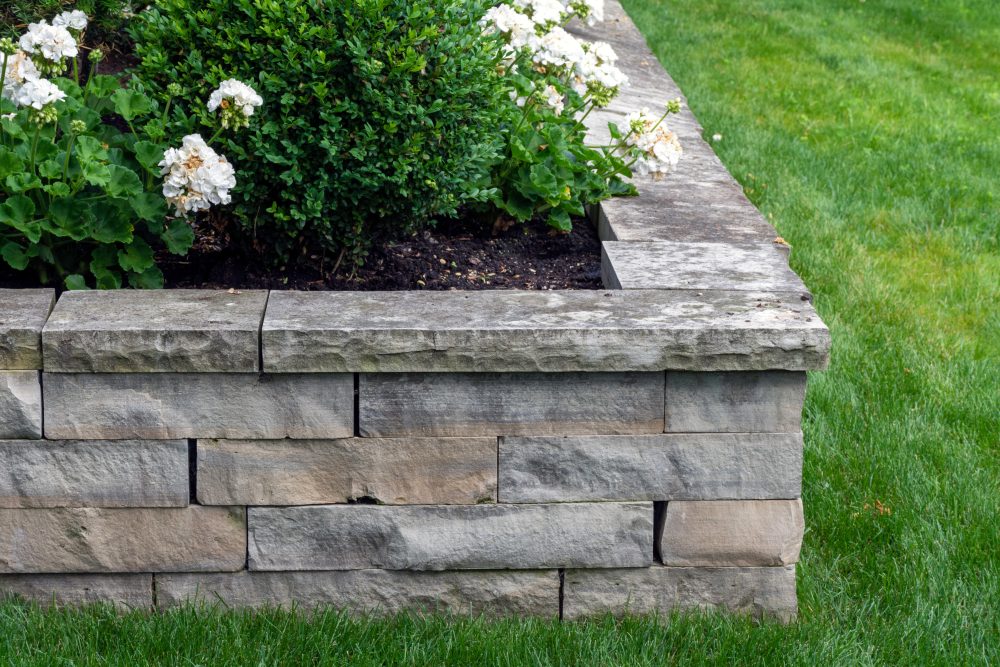That unsightly slope in your backyard isn’t just an eyesore—it’s likely causing drainage problems, limiting your usable outdoor space, and maybe even threatening your home’s foundation. You’ve probably noticed soil washing away after heavy rains or struggled to maintain grass on that stubborn incline. The solution might be simpler than you think, though choosing between the various types of retaining walls available can feel overwhelming when you’re not sure where to start.
At Accurate Lawn Leveling, we’ve helped countless homeowners transform problematic slopes into functional, attractive outdoor spaces. With years of experience installing retaining walls across different soil types and terrain challenges, we understand that the right wall for your neighbor’s yard might not be the best choice for yours. Your property deserves a solution that balances structural integrity, aesthetic appeal, and long-term value.
The good news is that modern retaining wall options offer something for every budget, landscape style, and functional need. Understanding the key differences between wall types will help you make a confident decision that protects your investment and enhances your property for decades to come.

Timber Retaining Walls: Natural Charm with Limitations
Wood retaining walls bring warmth and natural beauty to landscapes, making them particularly popular for garden beds and terraced yards. Pressure-treated lumber can create attractive walls up to three or four feet tall, and the installation process is often straightforward enough for motivated homeowners. The initial cost typically runs lower than most alternatives, which makes timber walls appealing for budget-conscious projects.
However, organic materials face inevitable challenges. Even treated wood eventually succumbs to rot, insect damage, and moisture exposure, usually requiring replacement within 10 to 20 years depending on your climate and maintenance routine. The wood can warp over time, compromising the wall’s structural integrity and creating potential safety concerns. For temporary solutions or low-height decorative applications, timber might work well, but properties needing long-term stability should probably consider more durable options.
Concrete Block Systems: Versatility Meets Durability
Interlocking concrete blocks have revolutionized residential retaining walls over the past few decades. These modular systems stack together without mortar, relying on their weight and interlocking design to create stable structures. You’ll find concrete blocks in countless colors, textures, and sizes, allowing you to match virtually any architectural style from rustic stone to sleek contemporary.
The engineering behind quality concrete block systems is impressive. Most manufacturers design their blocks to handle significant soil pressure while allowing for proper drainage, which prevents the buildup of water pressure that destroys lesser walls. Installation requires careful attention to base preparation and proper backfill techniques, but the results typically last 50 years or more with minimal maintenance. The versatility of concrete blocks makes them suitable for walls ranging from two feet to substantial structures requiring engineering approval.
Poured Concrete Walls: Maximum Strength for Challenging Sites
When your property presents serious elevation changes or unstable soil conditions, poured concrete walls deliver unmatched structural performance. These monolithic structures can handle extreme loads and provide the most reliable solution for heights exceeding six feet. Engineers can design poured concrete walls to meet specific site requirements, incorporating reinforcement bars and proper footings to ensure decades of trouble-free performance.
The trade-off comes in aesthetics and cost. Plain concrete walls can appear industrial or stark, though various finishing techniques like stamping, staining, or veneering can soften their appearance. The installation process requires professional contractors with specialized equipment, and the initial investment runs higher than most alternatives. For properties with significant grade changes or where failure would threaten structures, the added expense of poured concrete often proves worthwhile.
Natural Stone Walls: Timeless Beauty at a Premium
Nothing quite matches the elegance and permanence of natural stone retaining walls. Whether dry-stacked or mortared, stone walls blend seamlessly into landscapes while providing exceptional durability. The material itself is virtually maintenance-free, resisting rot, rust, and decay while developing an attractive patina over time. Properly constructed stone walls can stand for centuries, as evidenced by ancient examples still functioning worldwide.
The primary consideration with natural stone involves cost and installation complexity. Quality stone materials command premium prices, and skilled masons who can properly construct stone walls are increasingly rare. The labor-intensive process makes stone walls the most expensive option for most projects. However, for homeowners prioritizing timeless aesthetics and maximum property value, few investments make a stronger statement than expertly crafted stone work.
Making Your Decision
Selecting the right retaining wall type depends on your specific situation rather than any universal “best” option. Consider the wall height you need, the soil conditions on your property, your budget constraints, and how long you plan to stay in your home. The least expensive option might cost you more in the long run if it requires replacement or repair within a few years.
Your landscape deserves a retaining wall solution that protects your property while enhancing its beauty and value. At Accurate Lawn Leveling, we’re ready to assess your unique situation and recommend the wall type that makes the most sense for your goals and budget. Reach out today to schedule a consultation, and let’s transform that problematic slope into an outdoor space you’ll love for years to come.
